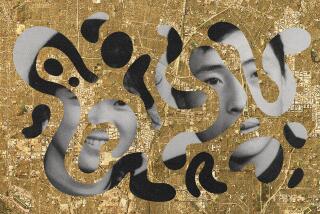Making a Difference: Asians For Miracle Marrow Matches : Life-and-Death Matchmakers
- Share via
More than 60 blood-related diseases, including such life- threatening conditions as leukemia and aplastic anemia, can be treated with healthy bone marrow from a living donor. The best odds of finding a donor are within one’s family. The next best chance for a genetic match is within a patient’s ethnic group--but among many minority populations, culture and belief are barrier rs to donating marrow.
Asians For Miracle Marrow Matches was organized five years ago in Los Angeles to recruit potential donors from Southern California’s Asian and Pacific Islander communities and to help them overcome their hesitation, including unfounded fears of disfigurement and worry about adequate medical attention during the process. Some people also wrongly believe the only the wealthy or influential will benefit from donations.
Since 1991, Asians for Miracle Marrow Matches has registered more than 15,000 people. The work is sponsored by the federally-funded National Marrow Donor Program, an organization that maintains a federal donor registry and covers the costs of marrow testing for minority donors. Through the efforts of groups like Asians for Miracle Marrow Matches more than 1.7 million people have signed up with the national registry since it was established in 1987, and 3,548 patients have been matched with donors.
Who Registers?
More than 1.7 million donors are currently registered with the National Marrow Donor Program.
White: 62%
Unknown: 20%
African American: 7%
Hispanic: 6%
Asian/Pacific Islander: 5%
The Donation Process
OUTREACH: Volunteers and staff organize marrow donation drives at churches, comunity centers and schools. Donors must be 18-55 years of age and in good health.
BLOOD SAMPLE: Technicians take two to three tablespoons of blood to identify genetic markers. Typing costs about $45 per person and is paid for by the National Marrow Donor Program.
CONSENT: Donors agree to allow genetic typing information to be listed anonymously in the National Marrow Donor Program computer registry.
EXTRACTION: If a match is verified, about a pint of marrow is removed from the back of the donor’s pelvic bone. The procedure usually takes less than an hour. Soreness may last for a few days and marrow replenishes itself within two to three weeks.
Donor
Roselle Espiritu, 20, lives in West Covina and works as a medical technician at a hospital in Duarte.
” There was a long line at church the day I signed up to be a donor. I was hungry, took one look at the line and headed for the door. My mom said she’d buy me lunch if I signed up. I was thinking of my own hunger, not that someone is dying. Then you get to be more informed. I didn’t know how great the need is.
“It still hasn’t hit me that I’ve met my marrow recipient and his family. It blows me away. A bit of my discomfort is worth someone’s life.”
(Note: the names of donor and recipient are kept confidential unless both sides agree to disclosure).
Recipient
Hauwa (William) Ko, 35, of Mission Viejo was diagnosed with leukemia May 3, 1993, and received a transplant of Roselle Espiritu’s bone marrow on March 24, 1994. Since the transplant, his leukemia has been in remission.
“It’s amazing to me that my donor’s mother encouraged her to become a donor. It’s rare for an Asian mom to encourage her kids to register as a donor. Many Asian people are conservative, and we can be scared that the procedure might shorten our children’s lives. The truth is that the procedure may help others to lengthen their lives. Roselle and I are living proof of the good that comes from donation.”
GET INVOLVED
Asians For Miracle Marrow Matches (213)626-3406. Judie Davis Marrow Donor Recruitment Program (outreach for African Americans) (310) 677-9531. Hispanic Campaign, National Marrow Donor Program (818) 858-3390.
Researched by CATHERINE GOTTLIEB / For The Times






